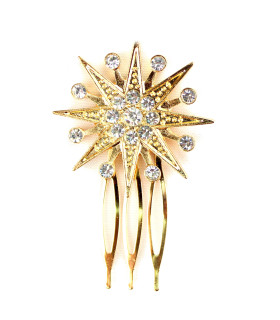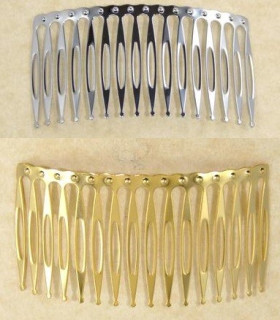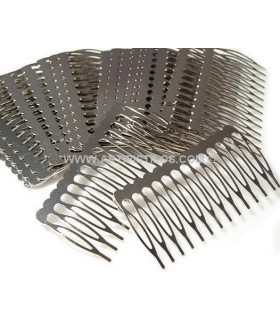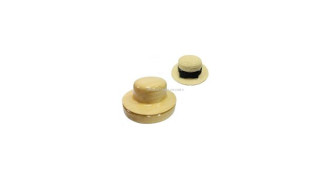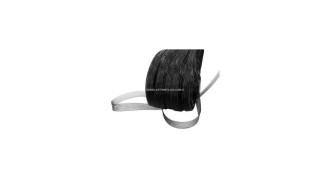HAIR COMBS
THE BEST COMBS FOR HEADDRESSES ARE HERE
An application for combs that we have not mentioned before are the combs for headdresses.
Headdresses are decorative garments that are placed on the head and have a strictly aesthetic function. There are many types: with nets, veils, feathers, flowers, fabrics... A whole universe of style! Here we have headdresses for weddings and headdresses for brides.
However, how do these accessories fit if they cannot be fitted on the head like hats? In many cases, the key is a comb for headdress. Both small and large headdresses can be sewn or glued with specific adhesives to a comb to anchor it to a bun.
In the online store of Artipistilos, you will find a variety of combs for all the headdresses you will create, such as combs for brides. We have combs of different size (from 4 cm to 10 cm), material (plastic combs and metal combs, both of very good quality) and number of prongs. You can also get our wonderful combs individually or in packs of up to 5 units.
Regarding the colors of the combs, you also have where to choose from. You can opt for discreet colors that don't attract attention (transparent combs, white combs, black combs) or more striking ones (silver combs, gold combs).
WHAT ARE COMBS?
You will have seen them in fashion shows, folk celebrations, or period films, series or plays, especially those set in the 18th and 19th centuries. The hair combs (also known as "peinecillos") are a feminine accessory similar to a comb but, unlike it, they are not used to untangle and arrange the hair, but rather to hold it and adorn it as an ornamental element in itself.
A comb consists, on one side, of a convex body with all kinds of designs and ornaments and, on the other side, of a set of prongs that are driven into the bun of the user.
This accessory began to become fashionable in the last quarter of the 18th century when it began to be seen in portraits at the courts of both Spain and France.
Initially, gold, silver or alloys such as brass or steel were used for their manufacture. However, during the 19th century, large-sized combs became fashionable, so it was necessary to use lighter materials such as bone, ivory or tortoiseshell (from the turtle shell).
In the second half of the 19th century, plastics that imitated noble materials began to gain popularity. This, together with the increasing use of molds for their manufacturing, led to the exponential increase in their production and, with it, their price reduction.
In Spain, their use has been very common since the end of the 18th century, and it is still usual to see them at important events such as weddings, baptisms, Holy Week processions, bullfights, folk shows, and flamenco and copla performances.
Very well known are the combs for mantillas which, as their name suggests, are combs attached to a large-sized lace mantilla. They are a very typical element of some regional costumes, such as the fallera costume (Valencian Community) or the flamenco costume (Andalusia).






